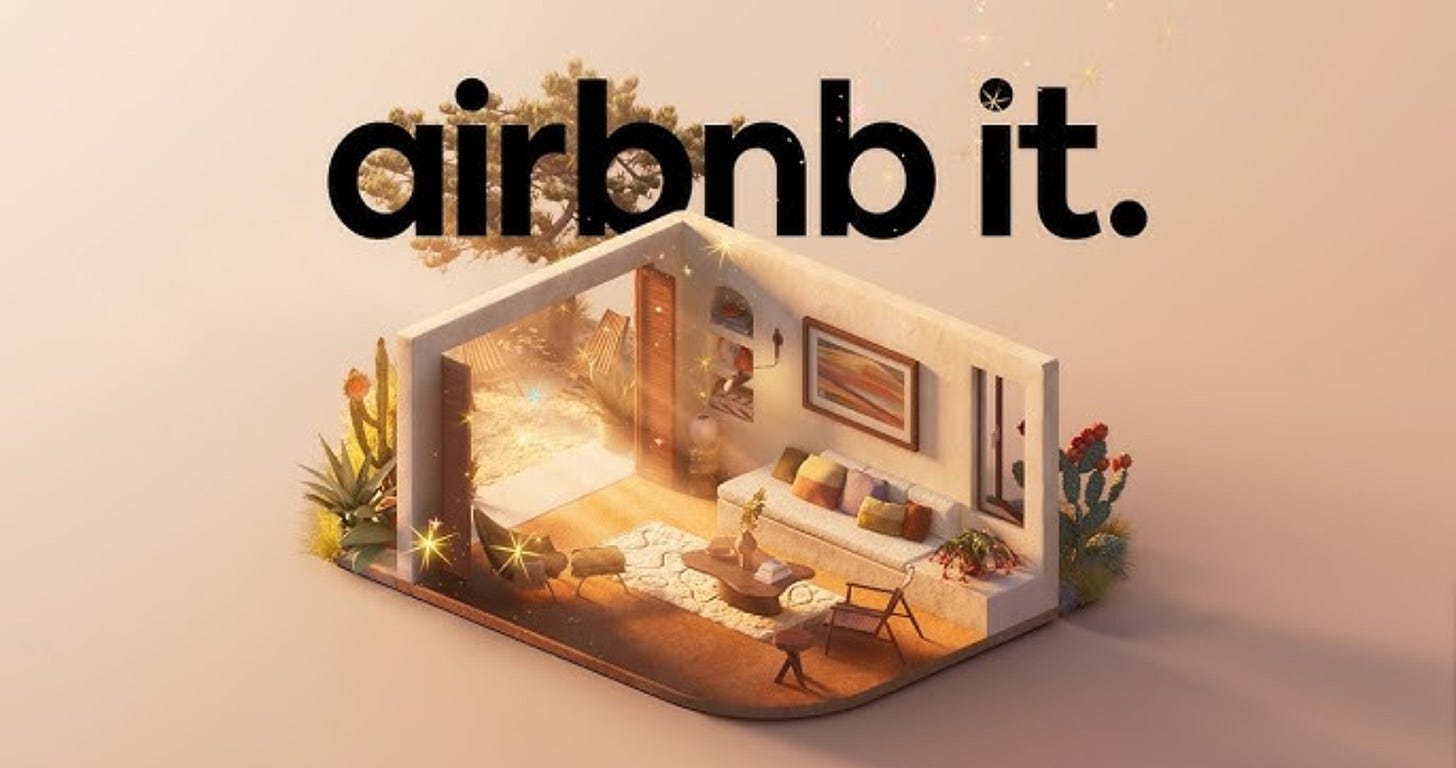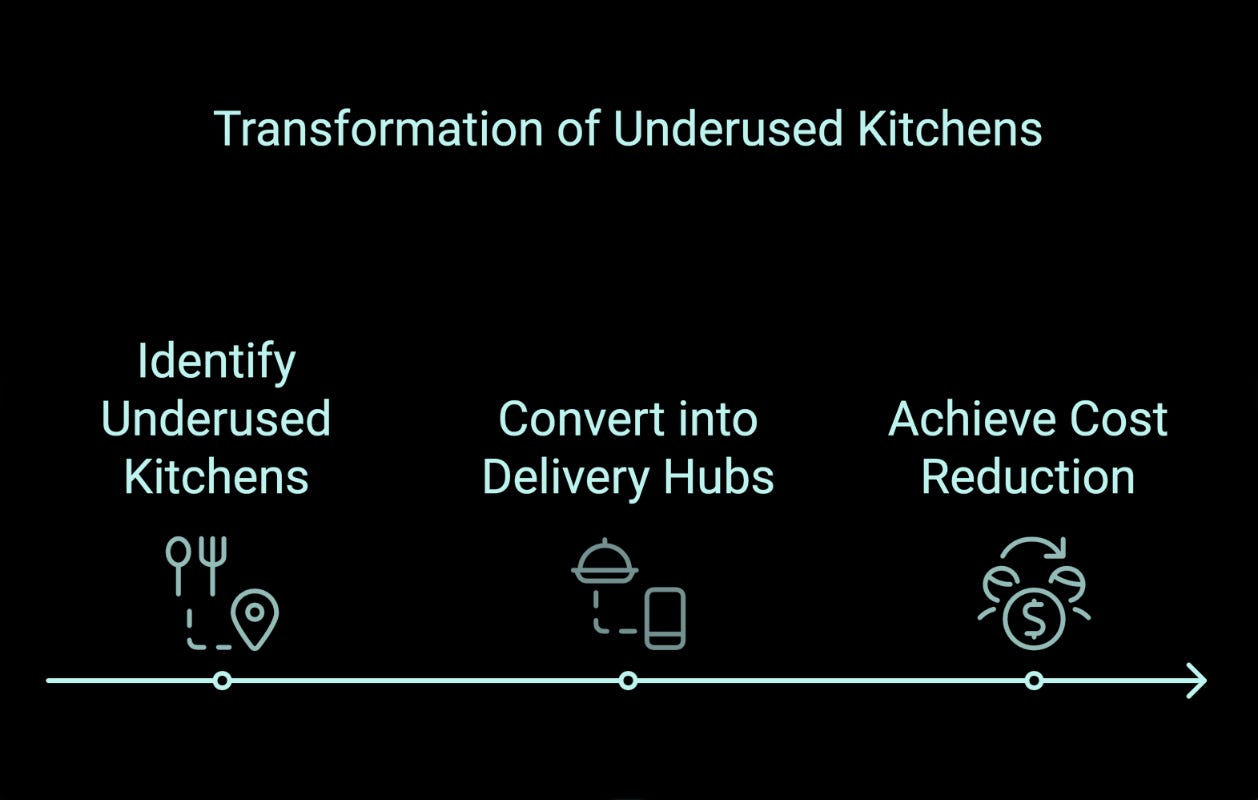How Airbnb Won. Zero Asset Mode.
Leverage the Zero Asset Airbnb Model and turn your Customers’ Capital into Your Own
TLDR:
Airbnb's Zero-Asset model disrupted hospitality by turning capital costs into customer opportunities using partner-owned assets.
This strategy, which eliminates upfront investments and scales dynamically, has transformed industries like restaurants, professional services, and manufacturing offering a playbook for your business to innovate.
Most Airbnb analyses miss the point entirely.
They focus on the marketplace, network effects and pretty interfaces. They miss the transformation of capital requirements into customer opportunities.
Here's how you can apply this thinking to disrupt any industry.
The Billion-Dollar Question
"What if your biggest capital expense could become your customers' greatest revenue opportunity?"
This question isn't just about hospitality. It’s the first step to think how businesses create and capture value. We must start with a broken industry ripe for disruption to understand its power.
The Traditional Hospitality Trap
Pre-2008, the hotel industry was trapped in a capital-intensive race with no winner:
A mid-sized hotel developer faced:
Millions in construction costs
3-5 years of construction time
5-7 years to reach profitability
65% of revenue consumed by fixed costs
Expansion limited by debt capacity
The industry accepted these constraints as facts.
But Brian Chesky and Joe Gebbia saw billions in sleeping assets waiting to be leveraged.
Capital Transformation Model
Here’s a fundamentally new way of thinking about business assets like Airbnb:
Traditional Asset Model:
Massive upfront capital investment
Long payback periods
Fixed capacity constraints
Geographic limitations
High operational overhead
Zero-Asset Model:
Partner-owned assets
Immediate revenue generation
Dynamic capacity scaling
Borderless expansion
Variable cost structure
The results shocked hospitality:
Property costs: $0 (vs. Hilton's $15B+ in real estate)
Host earnings: $150B+ cumulative payouts since launch
Market reach: 4M+ hosts across 220+ countries
Innovation speed: New categories (experiences, luxury) launched at 1/10th the cost
A Model for Every Field
This thinking has sparked transformations across industries:
Restaurant Industry (CloudKitchens)
CloudKitchens turns underused kitchens into delivery hubs, letting businesses launch food brands for a fraction of the cost of opening a traditional restaurant.
Traditional Model:
$1M+ for restaurant buildout
5-year leases
60% failure rate
Zero-Asset Model:
Existing kitchens become micro-fulfillment centers
$250K+ annual revenue per kitchen
300% YoY growth
85% reduction in startup costs
Professional Services (Toptal)
Toptal connects companies with top freelance experts worldwide, saving costs by skipping full-time salaries and office expenses.
Traditional Model:
Full-time consultant salaries
Office overhead
Geographic limitations
Zero-Asset Model:
Global talent network
Pay-per-project model
$1B+ expert earnings
95% cost reduction for clients
Manufacturing (Xometry):
Xometry uses a network of factories to make manufacturing faster and cheaper without the need for owning a factory.
Traditional Model:
Massive factory investments
Limited capacity utilization
High maintenance costs
Zero-Asset Model:
5000+ facility network
40% higher utilization
70% faster production
Zero capital expenditure
Your Transformation Playbook
Map Your Capital
Start by listing your top 3 capital-intensive components.
For each, ask:
What's the annual cost?
Who already owns similar assets?
How are these assets currently underutilized?
Find Hidden Assets
Look for potential partners who own relevant assets:
Neighbouring industries
Your customers
Your suppliers
Complementary businesses
Design the Value Exchange
Create compelling incentives:
Immediate revenue opportunities
Reduced fixed costs
Better asset utilization
New market access
Test and Scale
Begin with a focused experiment:
Choose one asset type
Start in one market
Measure utilization rates
Track partner satisfaction
The Future of Business
The next wave of disruption will not come from building new assets but from transforming existing ones into revenue engines for their owners.
Your Next Steps
List your top 3 capital costs
Identify who already owns similar assets
Design a value proposition for asset owners
Run a small-scale test
Building the future isn't about owning everything - it's about empowering everyone to create value with what they already have.








